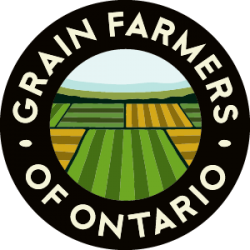In vitro and genomic selection to increase yield and FHB tolerance in barley for eastern Canada
Principal Investigator: Francois Belzile
Research Institution: Laval University
Timeline: April 2013 – March 2018
Objectives:
- Explore two novel approaches for achieving improved tolerance to FHB in barley:
- The first strategy focuses on the use of in vitro selection where barley microspores (immature pollen) are challenged with the mycotoxin DON in cell culture and some of the surviving microspores produce double haploid lines.
- The second strategy focuses on the use of genomic selection – identification of superior progeny on the basis of its genetic makeup and predicted performance.
Impacts:
- Based on early results, the severity of FHB and DON in barley lines selected by applying in vitro selection showed a slight reduction in FHB symptoms and much lower levels of disease compared to lines from traditional breeding programs.
- Early data suggests the genomic selection model will provide a good basis to select FHB-resistant lines of barley which would benefit barley production in eastern Canada.
- Using lessons learned from this project the researchers are coordinating efforts to develop a new barley breeding program in eastern Canada.
- Research now suggests that 6-row barley is more susceptible to FHB. As a result the researchers are now planning to transfer the technology developed through this project to work on 2-row barley.
Scientific Summary:
Results:
The first two years of the project focused on selecting genetic material – through in vitro and genomic selection – to be used in research trials in the final years of the project to test whether the selected lines exhibit improved FHB tolerance in the field. As of March 2018, researchers are still evaluating DON level results.
In vitro selection
Researchers examined 30-40 existing barley varieties to select those with in vitro resistance (IVR) to FHB, and only found one that had the level of FHB resistance they were expecting. This line was then crossed with non-IVR lines that had good field resistance to FHB. Crossing these lines combines different FHB resistance mechanisms that will be helpful for developing future barley varieties with a better package for FHB resistance. Preliminary results suggest that IV-selected progeny have superior field tolerance for FHB. On average, the IV-selected lines exhibited a lower severity of disease and a lower level of DON than the control lines derived from the same cross but that had not undergone IVS.
Genomic selection
Through this project, researchers finalized their genomic selection model and used it to test 300 individual plants and select 30 lines for testing in field trials. Preliminary results are encouraging and demonstrate a correlation between FHB-tolerant performance based strictly on genetic makeup and observed performance in trials.
Four advanced barley lines have been entered into official provincial registration trials, and researchers expect at least one will meet the required performance standards to be registered as a new FHB-tolerant barley variety in the future. These advanced lines are the product of the barley breeding program at Université Laval and were developed through conventional breeding. Superior lines derived from either in vitro selection or genomic selection work will continue to be advanced through the on-going breeding efforts.
Successes
Based on very preliminary results, the severity of FHB and DON in barley lines selected by applying in vitro selection showed a slight reduction in FHB symptoms, and much lower levels of disease compared to lines from a traditional breeding program. The early data also suggests the genomic selection model will provide a good basis to select FHB-resistant lines of barley, which may help strengthen the opportunity for barley production in eastern Canada.
Additional Opportunities
Researchers are coordinating efforts to develop a new barley breeding program in eastern Canada using lessons learned from this project, which will help boost the value of this crop. Colleagues in western Canada have expressed interest in this research project, and some researchers may integrate aspects of this work to establish a 2-row barley program.
There is a consensus among the research community that 6-row barley is more susceptible to FHB and given the challenges of developing FHB-resistant varieties, researchers are considering work on 2-row barley by transferring the technology developed through this research project.
External Funding Partners:
This research activity was part of the Canadian Field Crop Genetics Improvement Cluster led by the Canadian Field Crop Research Alliance (CFCRA).
Funding for this project was provided in part by Agriculture and Agri-Food Canada through the Growing Forward 2 (GF2) AgriInnovation Program and in part by CFCRA members. Grain Farmers of Ontario is a founding member of the CFCRA.
Project Related Publications:
Bélanger S. Clermont I. Esteves P. Belzile F. 2016. Extent and overlap of segregation distortion regions in 12 barley crosses determined via a Pool-GBS approach. Theor. Appl. Genet. 129(7):1393-1404.
Bélanger S, Esteves P, Clermont I, Jean M, Belzile F. 2015. Genotyping-by-Sequencing on Pooled Samples (Pool-GBS) and its Use in Measuring Segregation Bias during the Course of Androgenesis in Barley. The Plant Genome 9(1):1-13.
Esteves P, Clermont I, Marchand S, Belzile F. 2014. Improving the efficiency of isolated microspore culture in six-row spring barley: II-Exploring novel growth regulators to maximize embryogenesis and reduce albinism. Plant Cell Reports 33:993-1011.
Esteves P, Belzile F. 2014. Improving the efficiency of isolated microspore culture in six-row spring barley: I-Optimization of key physical factors. Plant Cell Reports 33:871-879.

